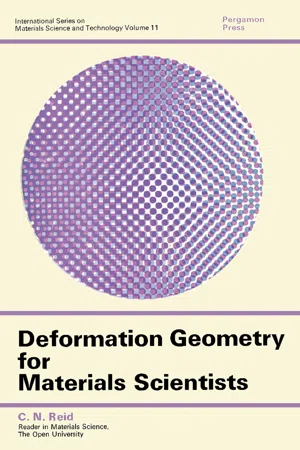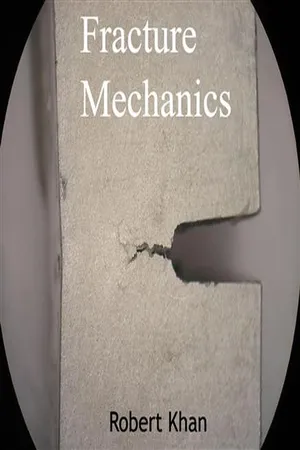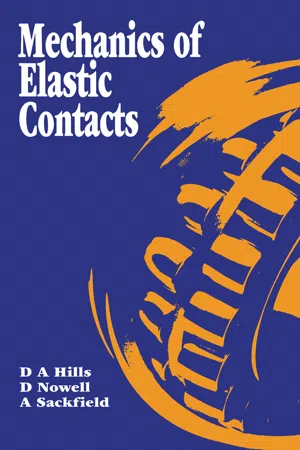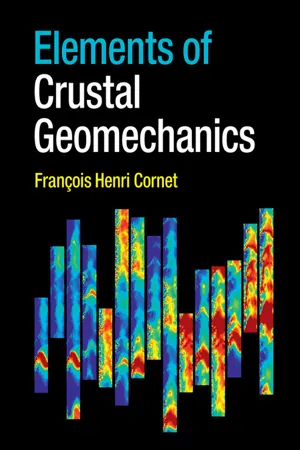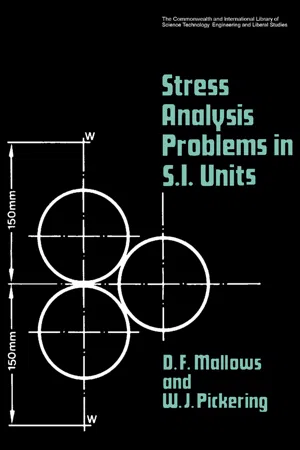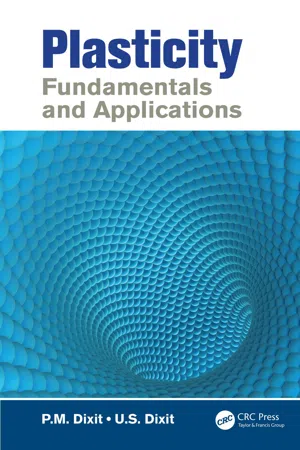Physics
Stress Components
In physics, stress components refer to the forces acting on a material that cause deformation. These forces are typically broken down into normal and shear components, with the normal stress acting perpendicular to the surface and the shear stress acting parallel to the surface. Understanding stress components is crucial for analyzing the behavior of materials under different loading conditions.
Written by Perlego with AI-assistance
Related key terms
1 of 5
12 Key excerpts on "Stress Components"
- eBook - PDF
Deformation Geometry for Materials Scientists
International Series on Materials Science and Technology
- C. N. Reid, W. S. Owen(Authors)
- 2016(Publication Date)
- Pergamon(Publisher)
THE CONCEPTS OF STRESS AND STRAIN 3 force into three components along Cartesian coordinate axes lying parallel to the edges of the cube. Stress is defined as the force divided by the area of the planar surface over which it acts, so the compo-nents of force acting on our unit cube may be regarded as the compo-nents of stress. Since a cube has six faces, and there are three force components acting on each, there would appear to be eighteen Stress Components in all; however, we shall soon see that they are not all independent of one another. The notation for stress must be able to refer to any particular component, and it can do this by stating the direction of the force component and the direction of the normal to the surface. The usual symbol for stress is a ip which represents a force of magnitude | σ ϋ | in the direction Ox,· acting over a surface of unit area whose normal lies along the direction Oxy. Usually, our stressed body is in static equilibrium, in which case the net force or torque due to all the components of stress must be zero. This places some restrictions on the Stress Components. Now since our stress is homogeneous, we can move our unit cube by unit distance along Oxi, Ox 2 , or Ox 3 and the surface forces acting on it will be unchanged; the forces on cube A are equal to the forces on the corresponding faces of cube B (Fig. 1.2). Since action and reaction Figure 1.2 The stresses acting at the interface between two cubes A and B. are equal and opposite, A must exert forces across the interface on B that are equal and opposite to the forces that A experiences from B, i.e. 0*12, 0*22, and er 32 . From this we draw the general conclusion that the forces acting on opposite faces of a cube in static equilibrium are equal and opposite on = e_i-j (1.1) This reduces the number of Stress Components from eighteen to nine. 4 DEFORMATION GEOMETRY FOR MATERIALS SCIENTISTS We should note that there are two physically distinct types of stress component. - Wole Soboyejo(Author)
- 2002(Publication Date)
- CRC Press(Publisher)
3 ________________________ Basic Definitions of Stress and Strain 3.1 INTRODUCTION The mechanical properties of materials describe their characteristic responses to applied loads and displacements. However, most texts relate the mechanical properties of materials to stresses and strains. It is, therefore, important for the reader to become familiar with the basic definitions of stress and strain before proceeding on to the remaining chapters of this book. However, the well-prepared reader may choose to skip/skim this chapter, and then move on to Chap. 4 in which the fundamentals of elas-ticity are introduced. The basic definitions of stress and strain are presented in this chapter along with experimental methods for the measurement and application of strain and stress. The chapter starts with the relationships between applied loads/displacements and geometry that give rise to the basic definitions of strain and stress. Simple experimental methods for the measurement of strain and stress are then presented before describing the test machines that are often used for the application of strain and stress in the laboratory. 3.2 BASIC DEFINITIONS OF STRESS The forces applied to the surface of a body may be resolved into compo-nents that are perpendicular or parallel to the surface, Figs 3.1(a)-3.1(c). In 59 (a) 60 (b) Chapter 3 Simple tension,- No longer available |Learn more
- (Author)
- 2014(Publication Date)
- White Word Publications(Publisher)
However, treating physical force as a one dimensional entity, as it is often done in mechanics, creates a few problems. Any model of continuum mechanics which explicitly expresses force as a variable generally fails to merge and describe deformation of matter and solid bodies, because the attributes of matter and solids are three dimensional. Classical models of continuum mechanics assume an average force and fail to properly incorporate geometrical factors, which are important to describe stress distribution and accumulation of energy during the continuum. The dimension of stress is that of pressure, and therefore the SI unit for stress is the pascal (symbol Pa), which is equivalent to one newton (force) per square meter (unit area), that is N/m 2 . In Imperial units, stress is measured in pound-force per square inch, which is abbreviated as psi. Introduction Stress is a measure of the average force per unit area of a surface within a deformable body on which internal forces act. It is a measure of the intensity of the internal forces acting between particles of a deformable body across imaginary internal surfaces. These internal forces are produced between the particles in the body as a reaction to external forces applied on the body. External forces are either surface forces or body forces. Because the loaded deformable body is assumed to behave as a continuum, these internal forces are distributed continuously within the volume of the material body, i.e. the stress distribution in the body is expressed as a piecewise continuous function of space coordinates and time. - eBook - PDF
- George H. Davis, Stephen J. Reynolds, Charles F. Kluth(Authors)
- 2012(Publication Date)
- Wiley(Publisher)
No, “stress” at a given point in a body is a tensor composed of a matrix of three normal stresses and six shear stresses operating in the configuration shown in Figure 3.23. It is for convenience that the surfaces of interest are oriented rationally within an (arbitrary) three-dimensional x-y-z Cartesian coordinate system whose origin is at the point in the body; and that all of the values of the normal traction components and shear traction components on the surfaces are determined in directions referenced to the x-y-z axes. Stress Analysis We want to learn how to calculate stress at a given point (p) within a body of rock that is subjected to forces. We do this by calculating the normal traction components and shear traction components (magnitudes and directions) on individual surfaces of all possible orientations within the given point in the body. If we can define stress at each and every point within the body, we can then fully describe the stress field. When the stress field is known, it is possible to determine normal traction compo- nents and shear traction components for each and every plane of every conceivable orientation within the body. This, then, becomes the basis for predicting and/or understanding the circumstances under which rocks fail by jointing or faulting. Setting up an Example of Stress Tensor Analysis We now go underground again, at least in our imaginations, to a tiny point (p) deep in granite, located 1500 m beneath the surface (Figure 3.24). The region of crust within which point p resides is tectonically active and is experiencing a z A B y x T T σ zz σ zx σ zy Figure 3.22 (A) Inside the bedrock is an infinitesimal surface on which is operating a traction (T). The orientation of this tiny surface is referenced with respect to an x-y-z Cartesian coordinate system. - eBook - PDF
Finite Element Simulations with ANSYS Workbench 2022
Theory, Applications, Case Studies
- Huei-Huang Lee(Author)
- 2022(Publication Date)
- SDC Publications(Publisher)
[16] The Stress Components on the negative-Y-face have exactly the same stress values as those on the Y-face but with opposite directions. ↗ [17] The Stress Components on the negative-Z-face have exactly the same stress values as those on the Z-face but with opposite directions. ↙ Symmetry of Shear Stresses [18] It also can be proven that the shear stresses are symmetric; i.e., τ XY = τ YX , τ YZ = τ ZY , τ ZX = τ XZ (2) These can be proved by taking the cube as free body and applying the moment equilibria in X, Y, and Z directions respectively. Stress State We now conclude that 3 normal Stress Components and 3 shear Stress Components are needed to describe the stress state at a certain point; therefore, a stress state may be described using a vector σ { } = σ X σ Y σ Z τ XY τ YZ τ ZX { } (3) Note that, to be more concise, we use σ X in place of σ XX , σ Y in place of σ YY , and σ Z in place of σ ZZ . These 6 components are, of course, functions of position. # X Y A B C ′ A ′ B ′ C Section 1.2 Structural Mechanics: A Quick Review 28 [1] Strains are quantities to describe how the material in a body is stretched and distorted. Strains are defined as the displacements of a point relative to its neighboring points. Although the notations of strain components are similar to those of Stress Components, the concepts of strains are even more difficult to comprehend. Let's consider 2D cases first; the concepts can be extended to 3D cases. Consider a point A and its neighboring points B and C, which are respectively along X-axis and Y-axis [2]. Suppose that, after deformation, ABC moves to a new configuration A'B'C' [3]. Keep in mind that, in this discussion, we assume that the deformation is infinitesimally small. - eBook - PDF
- William F. Hosford(Author)
- 2009(Publication Date)
- Cambridge University Press(Publisher)
In contrast, if there has been extensive plastic deformation preceding fracture, the material is con-sidered ductile . Fracture usually occurs as soon as a critical stress has been reached; however, repeated applications of a somewhat lower stress may cause fracture. This is called fatigue . The amount of deformation that a material undergoes is described by strain. The forces acting on a body are described by stress. Although the reader should already be familiar with these terms, they will be reviewed in this chapter. 1 2 Mechanical Behavior of Materials Stress Stress , σ , is defined as the intensity of force at a point. σ = ∂ F /∂ A as ∂ A → 0 . (1.1a) If the state of stress is the same everywhere in a body, σ = F / A . (1.1b) A normal stress (compressive or tensile) is one in which the force is normal to the area on which it acts. With a shear stress, the force is parallel to the area on which it acts. Two subscripts are required to define a stress. The first subscript denotes the normal to the plane on which the force acts, and the second subscript identifies the direction of the force. ∗ For example, a tensile stress in the x-direction is denoted by σ xx indicating that the force is in the x-direction and it acts on a plane normal to x. For a shear stress, σ xy , a force in the y-direction acts on a plane normal to x. Because stresses involve both forces and areas, they are not vector quantities. Nine components of stress are needed to fully describe a state of stress at a point, as shown in Figure 1.1 . The stress component, σ yy = F y / A y , describes the tensile stress in the y-direction. The stress component, σ zy = F y / A z , is the shear stress caused by a shear force in the y-direction acting on a plane normal to z. Repeated subscripts denote normal stresses (e.g., σ xx , σ yy ), whereas mixed sub-scripts denote shear stresses (e.g., σ xy , σ zx ). - eBook - PDF
- A. SACKFIELD, D A Hills, D. Nowell(Authors)
- 2013(Publication Date)
- Butterworth-Heinemann(Publisher)
Leipholz, Theory of Elasticity, Noordhoff, Leyden, 1974 1.9 DECOMPOSITION OF THE STRESS AND STRAIN TENSORS* In Section 1.2 the nature of the stress tensor was discussed, and it was shown how the six distinct components (allowing for complementary shear) introduced in Equation 1.4 are sufficient to describe the state of stress at a point, in a given set of coordinates. It was subsequently shown how a transformation of axes would lead to a variation in all of those components, but that there was always one particular set of axes, the principal axes, where all the off-diagonal (shear) Stress Components vanish. Further, if we consider any pair of principal stresses, they define a plane. The principal stresses represent the extreme values of direct stress found in that plane. The principal stresses are unique. 26 Mechanics of Elastic Contacts Therefore, since they are invariant with respect to the choice of axes, so are the coefficients of the equation defining their values (Equation 1.27). The three invariants of the stress tensor, /^ / 2 , / 3 , contain useful information about the nature of the stress state. However, only one of them, / j , has a direct physical significance. Normally, I x is defined as given in Equation 1.27. It will be recognized, however, that any multiple of I { is also invariant. In particular, IJ3 represents the average direct stress at a point. This quantity is known by several names, such as the hydrostatic stress, or the spherical stress. As well as representing the mean stress, it has a physical significance in that it represents the component of the stress state which merely causes material to expand or contract uniformly, that is, to dilate, without a change in shape. We might think of each of the direct stresses as being the sum of the average or spherical stress, , and another part, the deviatoric stress. - eBook - PDF
- François Henri Cornet(Author)
- 2015(Publication Date)
- Cambridge University Press(Publisher)
The spherical stress component ˜ σ s and the deviatoric stress component ˜ σ of the stress tensor are defined as ˜ σ s ≡ σ m ˜ 1, ˜ σ ≡ ˜ σ − σ m ˜ 1 (3.74) 61 3.5 More definitions The spherical component is sometimes called the isotropic stress component or the hydro- static stress component. Let us note that the trace of the deviatoric stress tr ˜ σ is zero. The principal directions of ˜ σ are the same as those of ˜ σ whilst the components of ˜ σ are ( ˜ σ ) 11 = σ 11 − σ m , ( ˜ σ ) 22 = σ 22 − σ m , ( ˜ σ ) 33 = σ 33 − σ m (3.75) ( ˜ σ ) 12 = σ 12 , ( ˜ σ ) 23 = σ 23 , ( ˜ σ ) 31 = σ 31 (3.76) The invariants of the deviatoric stress are J 1 = s 1 + s 2 + s 3 = 0 (3.77) J 2 = −(s 1 s 2 + s 2 s 3 + s 3 s 1 ) (3.78) J 3 = s 1 s 2 s 3 (3.79) where s 1 , s 2 and s 3 are the principal components of the deviatoric stress. Through algebraic manipulation it can be shown that the second invariant may be written J 2 = 1 6 [(σ 1 − σ 2 ) 2 + (σ 2 − σ 3 ) 2 + (σ 3 − σ 1 ) 2 ] (3.80) Octahedral stresses The octahedral stresses are the normal and shear components of the stress vectors, which act on planes with outward unit normal vectors defined in the principal stress direction frame of reference by the direction cosines (n 1 , n 2 , n 3 ) = ± 1 √ 3 , ± 1 √ 3 , ± 1 √ 3 (3.81) Eight such planes exist; they are parallel to the faces of an octahedron whose vertices are located on the principal stress directions. For these planes the normal stress component is σ oct = σ 1 n 2 1 + σ 2 n 2 2 + σ 3 n 2 3 = 1 3 (σ 1 + σ 2 + σ 3 ) = I ˜ σ 3 (3.82) whilst the shear stress component is given by |τ oct | = 1 3 [(σ 1 − σ 2 ) 2 + (σ 2 − σ 3 ) 2 + (σ 3 − σ 2 ) 2 ] 1/2 (3.83) = √ 2 3 (I 2 ˜ σ − 3II ˜ σ ) 1/2 (3.84) = 2 3 J 2 1/2 (3.85) Units for Stress Components The components of the stress tensor correspond to forces per unit area, i.e. - eBook - PDF
Stress Analysis Problems in S.I. Units
The Commonwealth and International Library: Mechanical Engineering Division
- D. F. Mallows, W. J. Pickering, N. Hiller(Authors)
- 2013(Publication Date)
- Pergamon(Publisher)
CHAPTER 10 Analysis of Stress in Engineering Components Definitions and Theory (a) The components chosen for study in this chapter have three things in common; they are fairly simple to analyse; some or all are included in most syllabuses; they illustrate the application of the basic theories developed in earlier chapters. d - Dia. of wire D - Mean dia. of spring N - Number of coils FIG. 10.1. Close-coiled spring. (b) Close-coiled helical springs of circular section wire. A close-coiled spring is one whose helix angle a is small enough for the approximations sin a -+· 0, cos a ->· 1 to be acceptable. For such a spring (Fig. 10.1), an axial load W will cause a torque at every cross-section of the spring of T = WD/2. (1) 224 ANALYSIS OF STRESS 225 The work done by the load when deflecting the spring an axial distance δ will be stored as strain energy in the spring. The torque T acts about a horizontal axis and can be split into two components, JTCOS a acting about the centre line of the spring wire and causing the cross-sections of the wire to twist through an angle Θ relative to one another, and Tsina acting perpendicular to the wire centre line and causing the wire to bend to an increased curvature and increase the axial twist, through an angle φ. Since a is small, T sin a can be neglect-ed and T cos oc == T. Hence the work done by the load is all stored as strain energy in twisting the wire, i.e. Wb = ΤΘ. (2) At any cross-section where the torque is T the maximum stress is given by -* - = -~ (3) d/2 J K) Combining eqns. (1) to (3) it can be shown that under an axial load the spring stiffness W/δ is W _ Gd* δ ~ iD*N' u t · * WD maximum shear stress is CM = nd 3 ' 2 and total strain energy is U = -^ττ X volume of wire. The other common form of loading is a torque M applied about the spring axis. The torque resolves into M cosa about an axis per-pendicular to the wire centre line and M sin a about the centre line. - eBook - PDF
Plasticity
Fundamentals and Applications
- P.M. Dixit, U.S. Dixit(Authors)
- 2014(Publication Date)
- CRC Press(Publisher)
(3.8) These nine components represent the state of stress at point P. Example 3.1 The traction vector at a point on a plane is (3 i + 4 j + 12 k ) N/m 2 , where i , j and k are unit vectors along x , y and z directions. If the direct stress on the plane is 5 N/m 2 , find out the magnitude of shear stress. SOLUTION The magnitude of the traction vector is given by t n = + + = 3 4 12 13 2 2 2 N/m 2 . (a) y y z d x d z z d y σ xz σ xz σ xy σ xy σ xx σ xx x x P P (b) FIGURE 3.4 (a) A parallelepiped around point P (stress vector components shown on one face). (b) Paral-lelepiped turning into a plane as d x becomes zero; stress vector components on positive face are shown; the components’ negative faces are equal and opposite to those on positive face. 90 Plasticity: Fundamentals and Applications Using Equation 3.7, σ τ nn ns 2 2 2 13 169 + = = , or τ σ ns nn 2 2 169 169 25 144 = -= -= . Hence, the shear stress τ ns is 12 N/m 2 . 3.3 Surface Forces and Body Forces In continuum mechanics, a body consists of continuous volume enclosed by its bounding surfaces. When a body is cut (actually or hypothetically), each part of the body has its volume bounded by the surface. A body part is sub-jected to forces by the environment and another part of the body. Some type of force can only be applied on the surface of the body. It is not possible to apply these forces at a point in the interior without breaking the body. When a workpiece is deformed by a hammer, the hammer strikes the surface only. Such types of forces are called surface forces. Surface forces are distributed over a finite area. One can obtain the intensity of the surface force at a point by dividing the force by the area on which it acts, in the limit of the area tending to zero. The intensity of the surface force is called surface traction. The total force on a surface S can be obtained by integrating the traction over the area. - eBook - PDF
An Integrated Framework for Structural Geology
Kinematics, Dynamics, and Rheology of Deformed Rocks
- Steven Wojtal, Tom Blenkinsop, Basil Tikoff(Authors)
- 2022(Publication Date)
- Wiley(Publisher)
J is also a tensor quantity. Position gradient and displace- ment gradient tensors characterize the nature of the general deformation component of the total displacement field. Moreover, specifying the com- ponents of either one of these tensors defines the degree to which solid-body rotation and pure strain contribute the general deformation compo- nent of the total displacement field. In a region of uniform stress, an analogous rela- tionship holds between the stress vector acting on a plane and a unit vector normal to the plane. That is, s n T , (6.28) where s is the traction vector acting on a plane N, n is a vector with a unit length that is normal to the plane N and is directed outward, and T is a matrix whose components characterize the state of stresses within the region. We can describe fully the orientation of any line by giving its direc- tion cosines relative to the coordinate axes. Let l be the direction cosine relative to the x 1 axis, m be the direction cosine relative to the x 2 axis, and n be the direction cosine relative to the x 3 axis. The components of the traction vector acting on the plane N are s s s l m n l m n l 1 2 3 11 12 13 21 22 23 31 32 33 11 12 13 21 m m n l m n 22 23 31 32 33 (6.29a) 6 Stress 282 The traction vector components acting parallel to the x 1 , x 2 , and x 3 axes, respectively, are s l m n 1 11 12 13 (6.29b) s l m n 2 21 22 23 (6.29c) s l m n 3 31 32 33 (6.29d) The traction vector component acting perpen- dicular to the face N is the sum of the projections of s 1 , s 2 , and s 3 on a line normal to N, whose direc- tion cosines are l, m, and n: N l m n s s s 1 2 3 (6.30a) N l l m n m l m n n l m n 11 12 13 21 22 23 31 32 33 (6.30b) N l m n l m l n m n 2 11 2 22 2 33 12 13 23 2 2 2 (6.30c) Similarly, the shear Stress Components acting on plane N are given by products of the traction vec- tor components s 1 , s 2 , and s 3 on lines parallel to N. - S.K. Ghosh(Author)
- 2013(Publication Date)
- Pergamon(Publisher)
STRUCTURAL GEOLOGY z-axis. The stress vector on any one of these planes can be resolved into three components parallel to the coordinate axes. Consider the stress vector on a plane perpendicular to the x-axis. Its component parallel to the x-axis is a normal stress. Let us call it a x where the symbol indi-cates that it is a normal stress and the subscript x indicates that it acts on a plane perpendicular to the x-axis. The other two components (Fig. 5.4a) acting parallel to the y-and z-axes, respectively, lie on the chosen plane (i.e. the plane perpendicular to the x-axis) and are therefore shear stresses. Let us designate them as x xy and τ χζ . The first suffix x indicates that the plane on which the stress component acts is perpendicular to the x-axis. The second suffix indicates the direction in which the stress component acts (Fig. 5.4a). , and τ χζ are thus the components of the traction or stress vector at the point O on a plane whose outer normal is along the x coordinate axis. Similarly, at the same point O we can choose a plane perpendicular to the y coordinate axis. The compo-nents of the stress vector on this plane are the normal stress and shear stresses and (Fig. 5.4b). Lastly, on a plane perpendicular to the z-axis the components of the stress vector are , τ ζχ and x zy (Fig. 5.4c).
Index pages curate the most relevant extracts from our library of academic textbooks. They’ve been created using an in-house natural language model (NLM), each adding context and meaning to key research topics.
